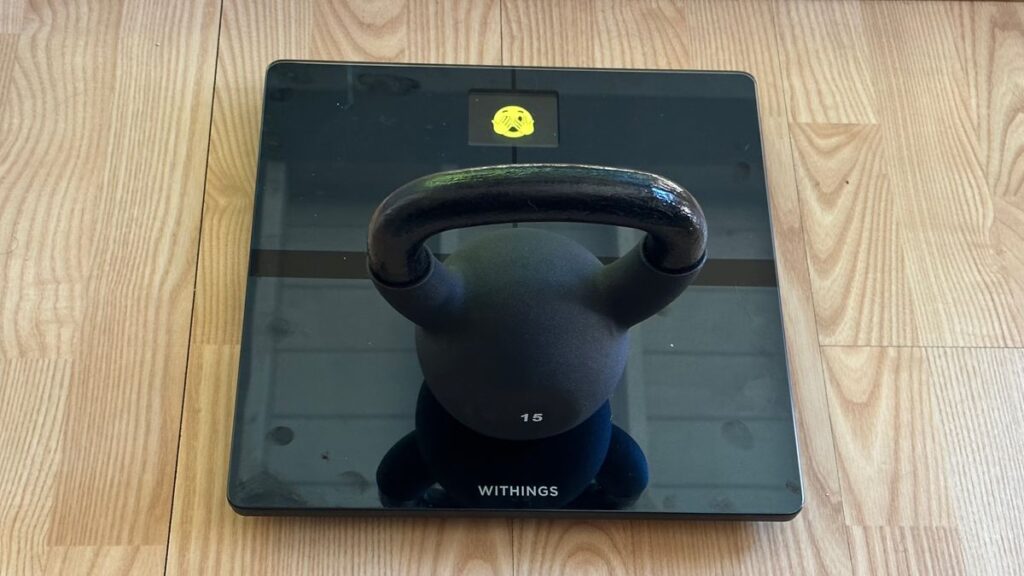Sunday Runday

In this weekly column, Android Central Wearables Editor Michael Hicks talks about the world of wearables, apps, and fitness tech related to running and health as part of his quest to get faster and healthier.
Last July, I realized that I had reached a weight of 225 pounds (close to “obese” for my height), gaining more than 20 pounds in three years. I then decided to make lifestyle changes to get back to my pre-COVID weight, but I ended up losing more, and now I'm at 192 pounds. And I didn't lose the weight through any strict diet or nutrition app, but through the help of some handy tech items.
The weight was piling up without me even noticing. I'd been running my whole 20s and early 30s, and my life revolved around walking in Boston and New York, so I was in good health. Even as my metabolism slowed, my mile pace dropped by a few minutes, and my belly and hips steadily grew, I never considered restrictive dieting or other adult concepts.
The pandemic and a sedentary writing job were turning points, but I didn't realize it. I continued to increase my running mileage, completing two (really slow) marathons in 2022, thinking my efforts would pay off in the form of weight loss. But the running did little to help, and the weight gain led to a foot injury in spring 2023.
That was the catalyst for my weight loss efforts, making July 2023 my mid-year resolution moment to change things up. A year later, the efforts paid off! So, for anyone currently at a weight loss plateau, I want to share the tech tool strategies I used to get back on track and why I didn't need a diet app to change my eating habits.
Disclaimer: I am not a weight loss expert or nutritionist, I am simply sharing solutions I have found for myself that I hope will work for others (but I can't guarantee it).
Body composition data weighing scale
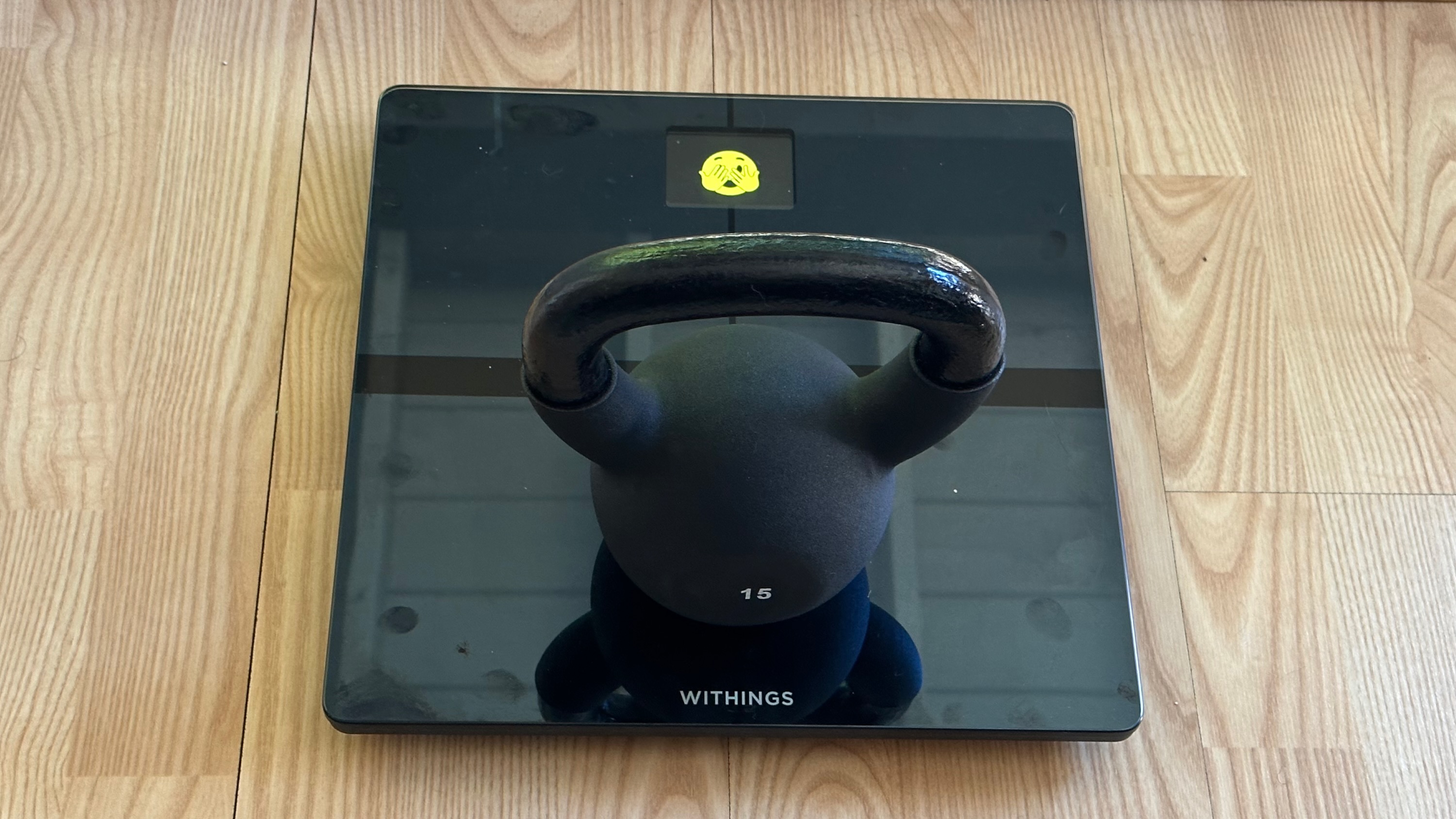
First, you need a tool to track your progress. I'm no expert on smart scales, but I like my Withings Body Smart for tracking body fat, muscle, visceral fat, basal metabolic rate, hydration, and a few other metrics. It also has a mode that lets you weigh yourself “with your eyes closed,” and I've learned not to get disheartened when I gain weight.
My strategy was to weigh myself consistently twice a week, on Wednesday/Thursday and Saturday/Sunday. Weighing myself every day makes me overly obsessed with everything I do that day. But weighing myself once a week gives me no basis for knowing if the data is accurate or just a fluke.
What I want to say is that since the beginning of 2024, I've lost 12 pounds. But across all weigh-ins, my weight has gone down 26 times, gone up 18 times, and plateaued twice.
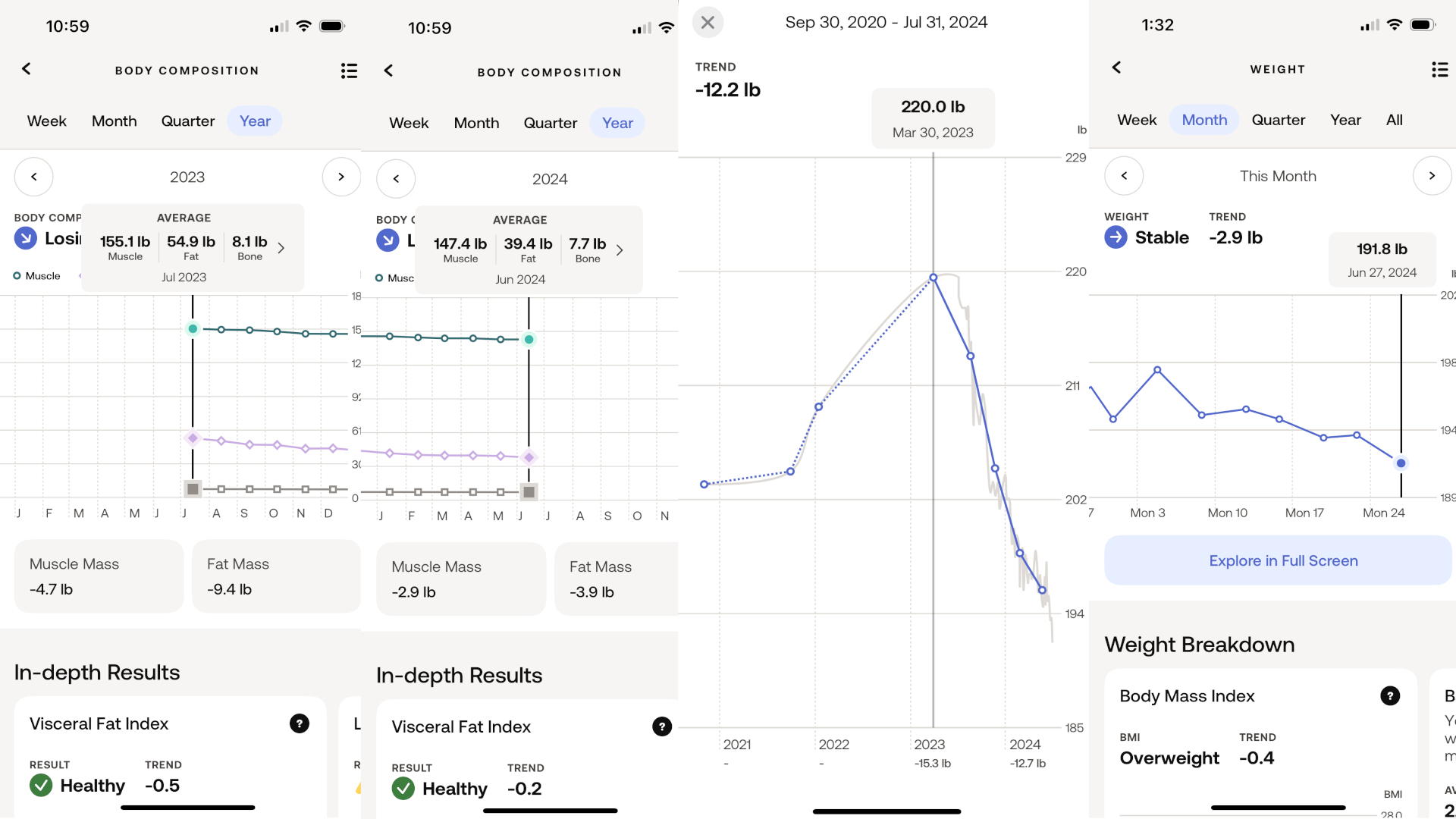
Sometimes I've gained or lost weight based solely on muscle gain or hydration, but my body fat remained the same. What happens more often is that after I lose body fat after a hard workout, my body naturally puts the fat back on after a few days.
My body fat was trending down from 25% to 19%, but weighing myself frequently helped me see my body's natural fluctuations and prevented me from getting too depressed (or overly optimistic) about one data point. As long as you're confident in your fitness and nutrition strategy, you should see results in the long run.
Any smartwatch (step count matters)
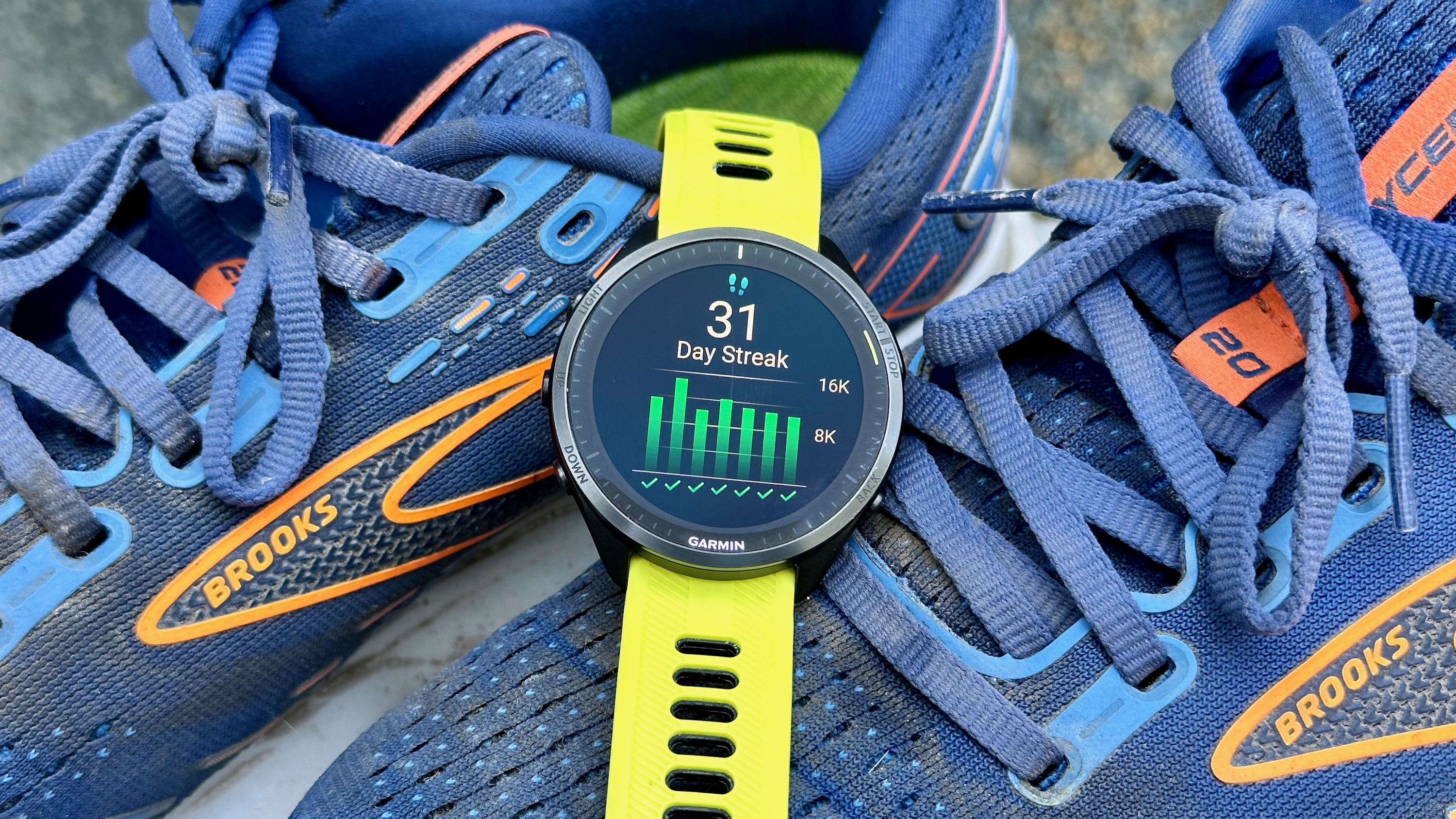
According to Strava, I ran 234 miles in 2021, 419 miles in 2022, and 674 miles in 2023. Most people would assume that all the extra miles I ran helped me lose weight, but I Earned Running more frequently didn't help me lose weight. Sure, every mile I ran had a temporary effect, but running at a high heart rate burns calories, not fat, and then your body demands that you replenish those calories.
My first successful weight loss was in August 2023, when I used a Garmin Forerunner 965 to track my steps and walked over 10,000 steps a day for a month, for a total of over 374,000 steps. boring It was experimental because I had to find a way to entertain myself while power walking for 60-90 minutes each night, but it helped me lose 9 pounds that month.
Why did it work? First, brisk walking falls into the category of low aerobic exercise: it gets you to 55-75% of your maximum heart rate and burns fat instead of carbs. More importantly, my daily walk freed up about 1.5-2 hours a day that I would normally spend sitting and eating snacks to spend time walking, showering, and hydrating.
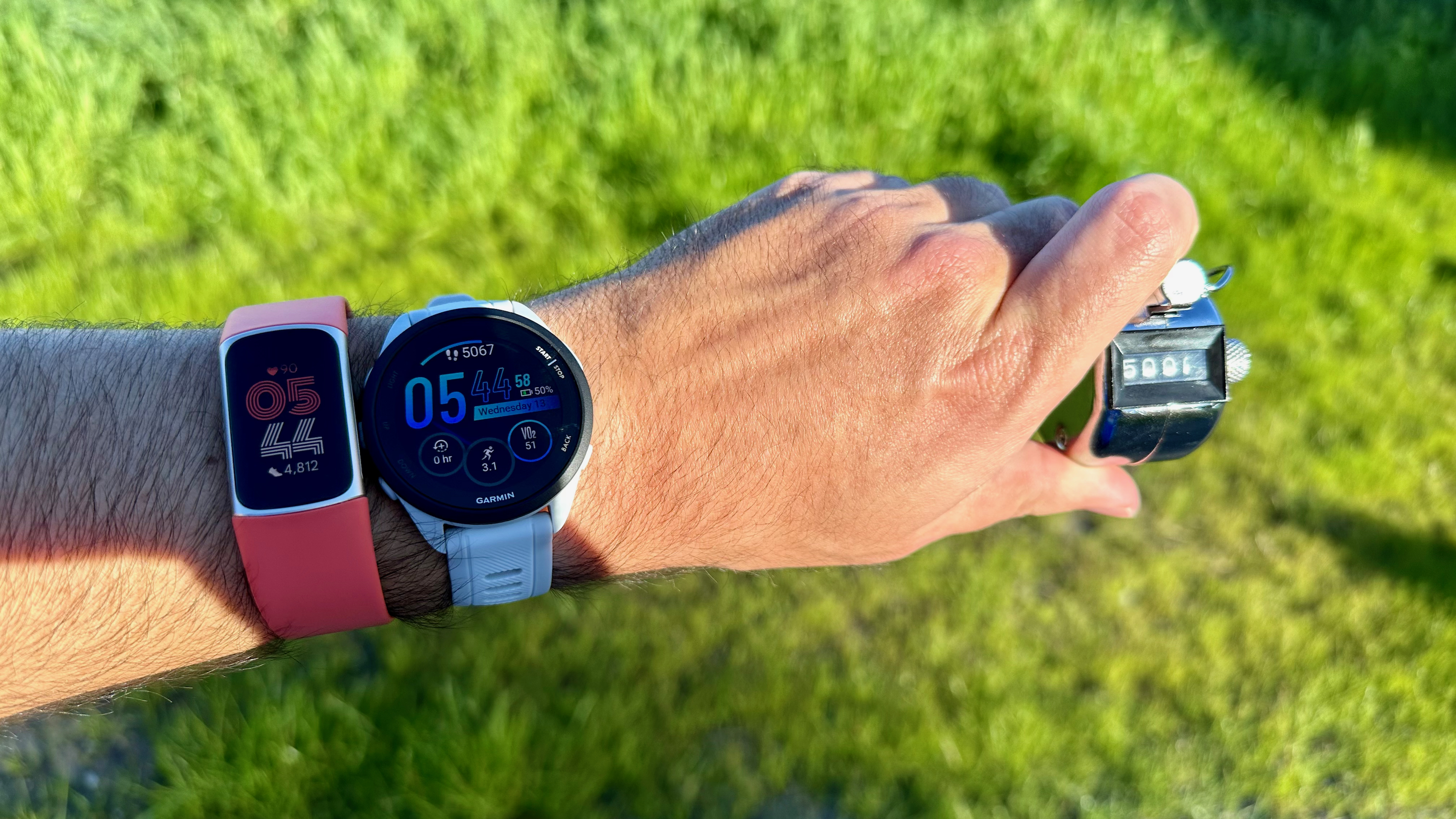
For those who lead a sedentary lifestyle and carry heavy loads, a long walk can help you mentally distract yourself from your appetite and is also a low-impact physical activity that won't tire you out too much the next day. Before you start, buy some good running shoes with cushioned insoles to protect your feet and pick a podcast or audiobook to fill your time.
I can't say I've walked since August. every There are too many books to read and video games to play every day. But my average steps since July 2023 are 7,829 steps. From July 2022 to July 2023, it was only 5,100 steps, most of which were from sporadic running. Fat-burning walking this year, especially hiking in hilly areas, has really helped me lose weight.
My Garmin Forerunner 965 is the most accurate watch for counting steps, but its price and features are too high for people who walk or hike. Technically, you can track your steps on your phone with Google Fit or Apple Health, but your phone isn't always the most accurate. It's also useful to track your walking activity to see not just your steps, but your distance traveled and your heart rate. That's why we recommend the best fitness watches and fitness trackers, like the Fitbit Charge 6.
Google Docs (really)
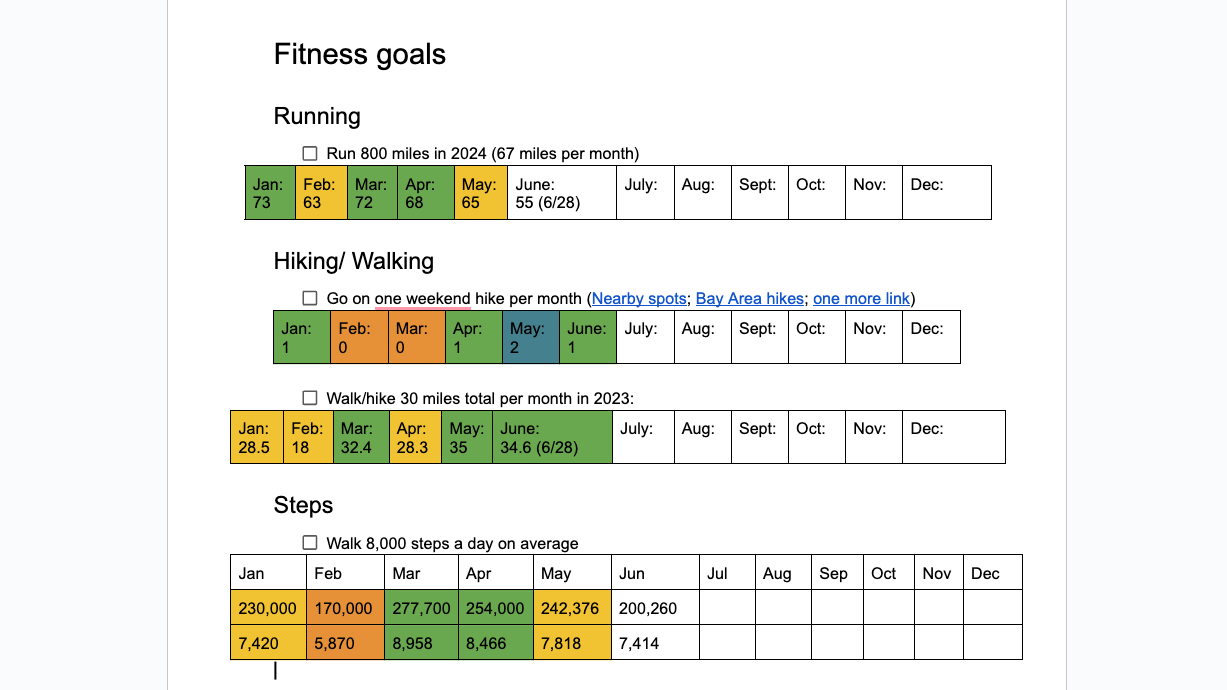
In the Chrome browser on my laptop, I have two tabs that I never close: Gmail and my “2024 Resolutions” document. In the latter, I track my monthly mileage, distance walked or hiked, steps taken, exercises like push-ups and squats, and a variety of other fitness (and non-fitness) related information. I took a quick screenshot above to show you where and how I track my information.
You can probably find hundreds of fitness-logging mobile apps, each with detailed graphs and motivational tools to push you to reach your daily goals and subtly make you feel bad if you slack off or miss a daily mark. But these apps didn't work for me, and they might not work for busy people whose work or caring for kids can ruin days, weeks, or even months of carefully planned progress.
Weight loss is a marathon, not a sprint, and if you're busy, monthly goals are more important than daily goals.
Weight loss is a marathon, not a sprint, and if you're motivated to hit your monthly goal, it's okay to fall behind for a few days – you can just make up for it in your free time or make an effort to catch up next month.
When the cold weather prevented me from completing my walking goal in February, I relegated the lazy month to a single orange “fail” box, then bounced back and completed my goal in March. My Google Doc helps me see how many chances I have left to reach my goal this year, so setbacks don't stop me from giving up completely.
A low-maintenance way to see all this data at a glance and update your progress with just a few keystrokes is better than complicated fitness apps. Choose not to open This is to avoid guilt. You can always glance at your resolution document and celebrate your progress or challenge yourself to make up for what you lost that night. And you will never give up on yourself.
No nutrition app needed
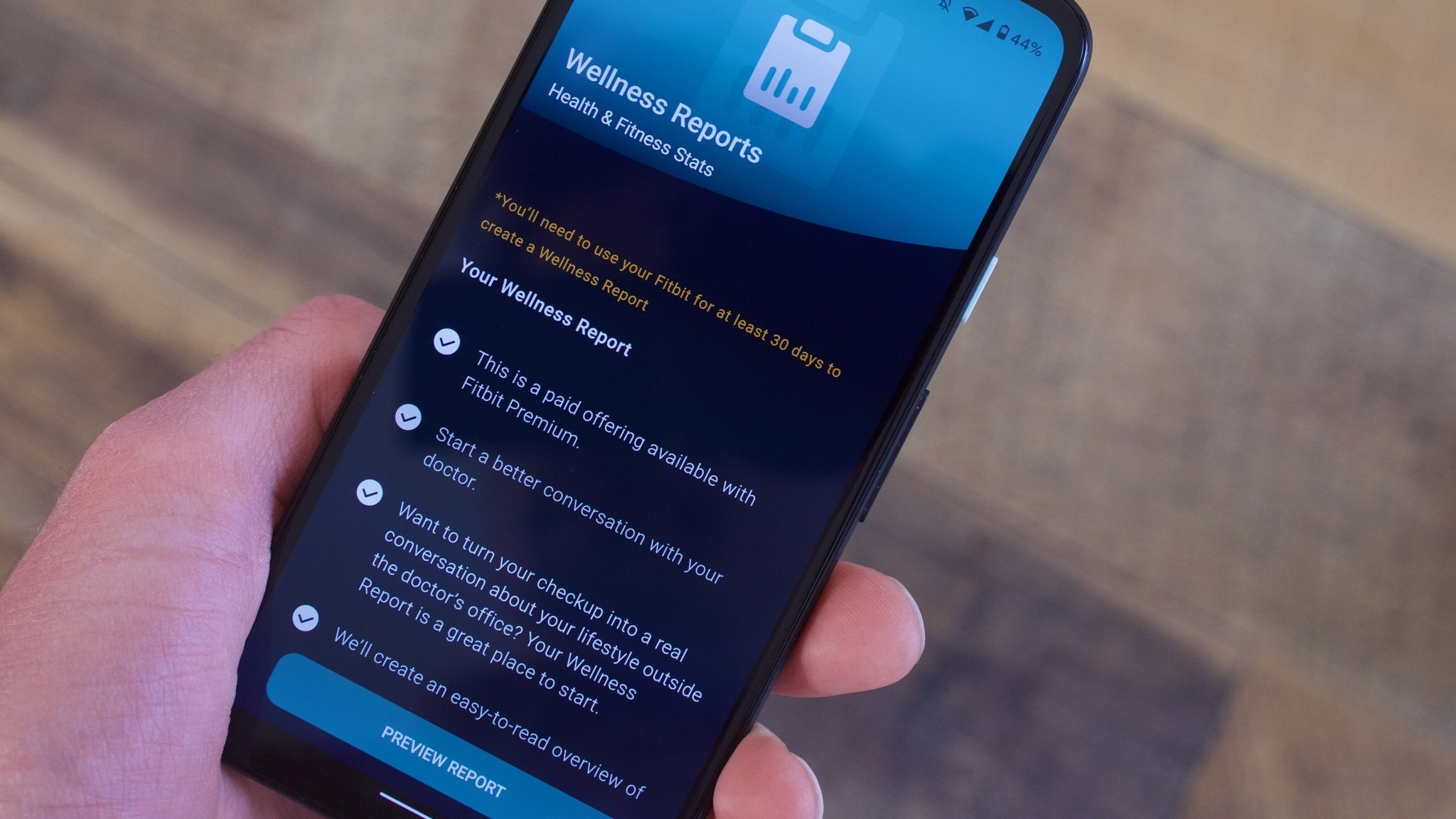
I know plenty of people who went on strict diets to lose weight, counting every calorie and weighing their food in nutrition apps, and without exception, these people ended up quitting the diet or app because (A) it was too much of a pain to track, and (B) they became obsessed with the consequences of every meal, to the point where the pressure and cravings escalated and they ended up overeating.
My approach has nothing to do with just eating 2,000 calories (or less) and losing weight. ModerationI want to lose this weight and keep it off, and I know I am. I'm not going to give up sugar, snacks, or the occasional beer for the rest of my life, so I had to find a balance between indulging myself without overdoing it.
I simplified things. I used to buy gummy worms (800 calories a bag) and eat them in one sitting, but now I buy 250-400 calorie bags or bars. I used to buy bags of Goldfish (840 calories) and devour them at my desk over the course of the day. Stop I stopped midway and switched to the Ritz Peanut Butter Sandwich Pack (200 calories) which is a natural way to cut calories.
Inhaling high-calorie snacks like crackers and chips feel Since it fills me up, I've switched to heavier snacks like bagels and protein bars that fill me up proportionally.
While I don't trust myself with a pantry full of snack foods, I think I can determine how much food is too much without a calculator, and I'm sure you can too.
It is normal to drink two or three glasses of alcohol to enjoy the feeling of being drunk without drinking too much, but I realized that I really do have a “beer belly.” So instead of reducing the amount of alcohol I drink at one time, day to day I started drinking it once or twice a week instead of every few days.
Takeaway foods are high in calories and salt, which can make you retain water, and while I want to cook every day, especially when I'm walking or running for hours a day, it's not an option. So I simply cut down on the number of times I eat out per month.
I could go on and on, but my overall point is that weight loss doesn't have to be calculated, it has to be relative and situational. I know I have a hard time controlling my urges for food in large containers, so I buy snack-sized portions that are more expensive but less dangerous, and then when I get home, I'm free to enjoy the food I bought for myself guilt-free.
As long as I'm eating less than I used to, I know it will pay off in the end and I'll continue to enjoy Five Guys and Ben & Jerry's in the long run.
Keep it simple!
In summary, I lost 30 pounds by walking a few more miles a day, using technology like a smart scale and smartwatch to track my activity and weight trends, using common sense to control food and drink portion sizes, prioritizing monthly goals over daily activity rings, and recording my progress in a Google Doc. It's simple, and that's why it worked for me.
Monthly weight changes since July 2023 are: -1.6, -9, -4, -4.5, -0.2, +0.6, -5.1, -2.6, -2, +1.2, -0.6, -2.9. After the initial weight drop, I have stabilized and some months I don't make significant progress because I'm too sedentary and snacking. But things are going well and I feel confident that I will find time to walk again, especially in the summer months when the sun is out past 8pm.
My weight loss advice is simple: schedule time to walk, whether you walk with someone or alone, and write down your progress somewhere so you can be honest. You can't give up delicious food for the rest of your life. Instead, find ways to eat less than you did yesterday, while still enjoying it in moderation and feeling guilty about it.

